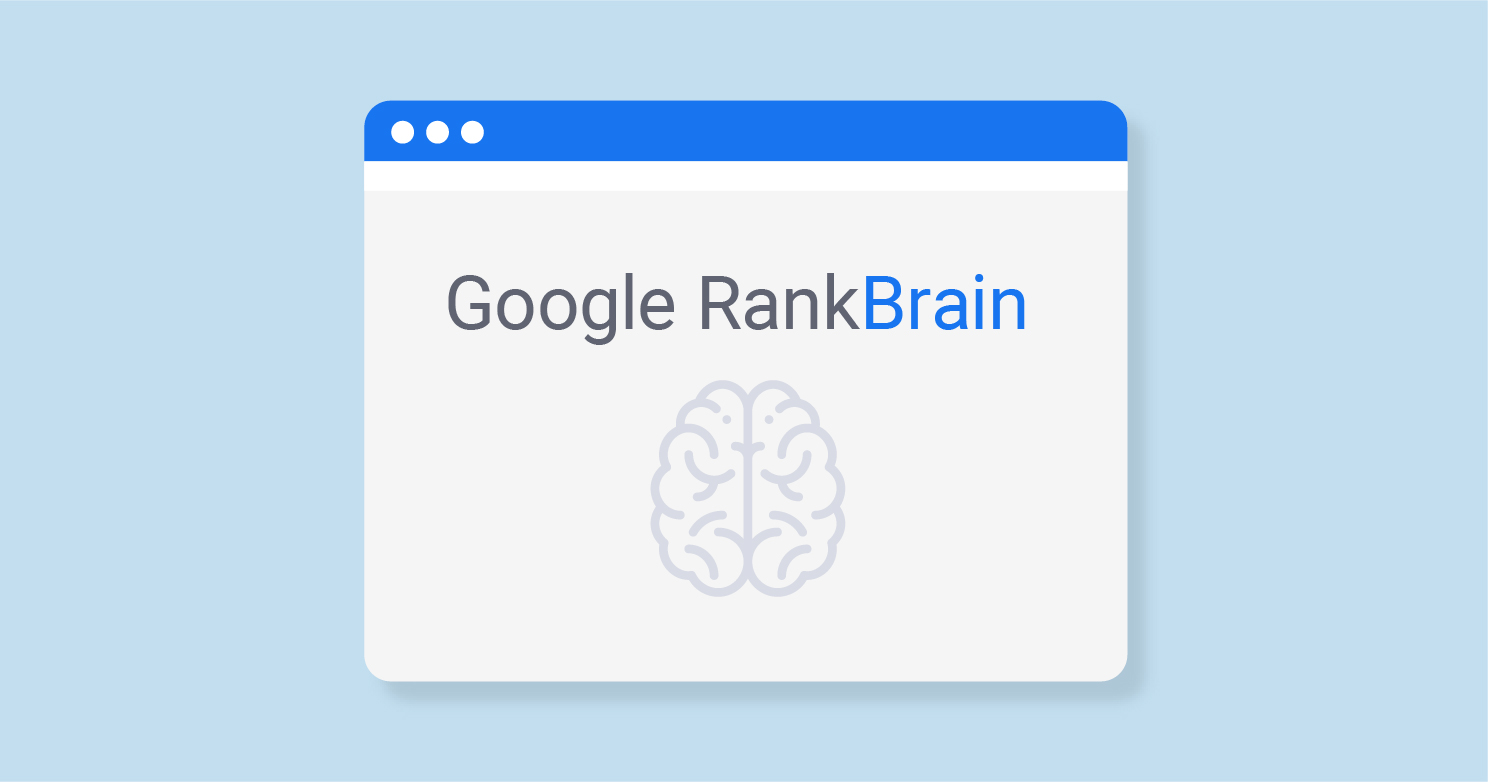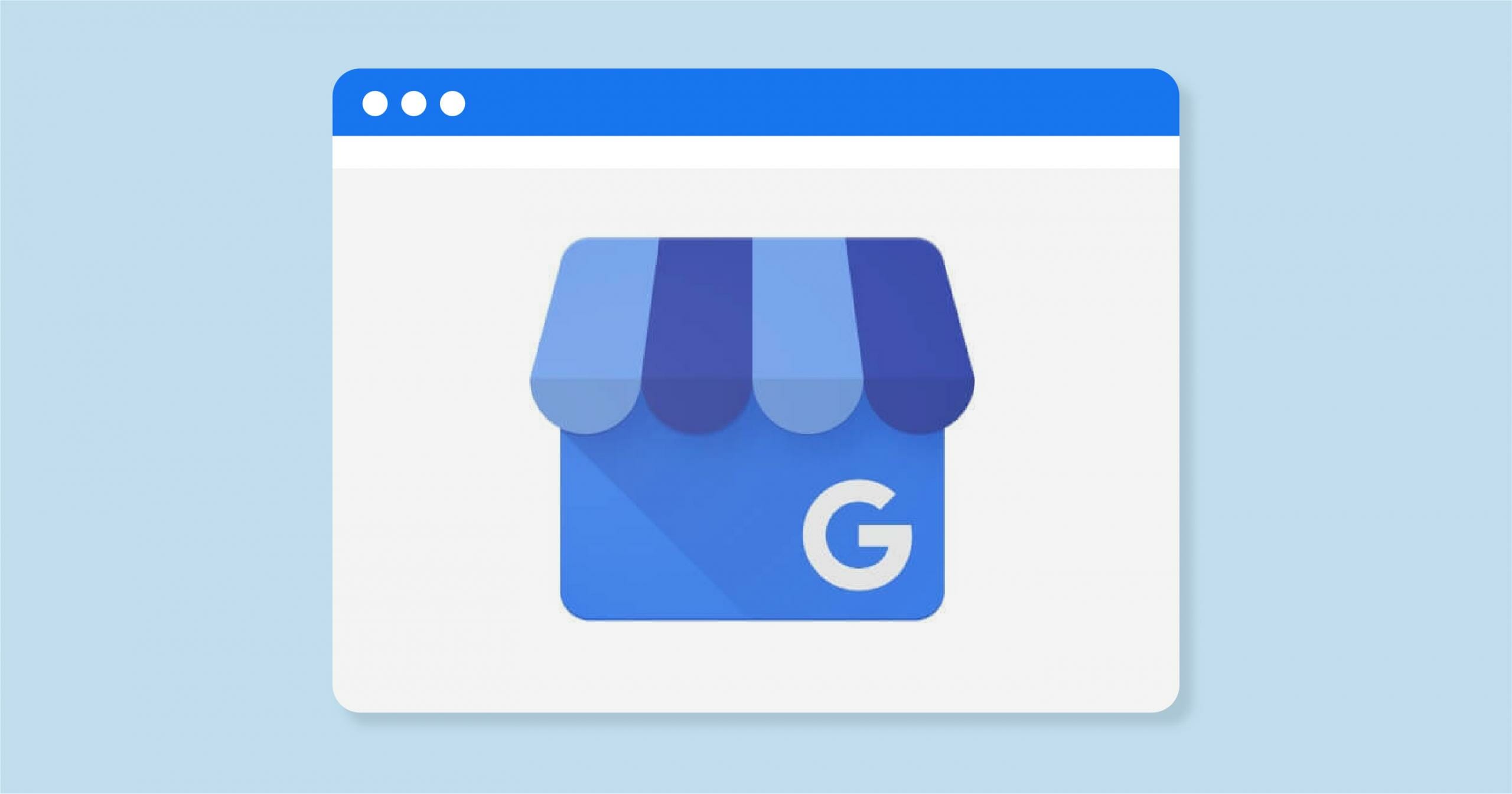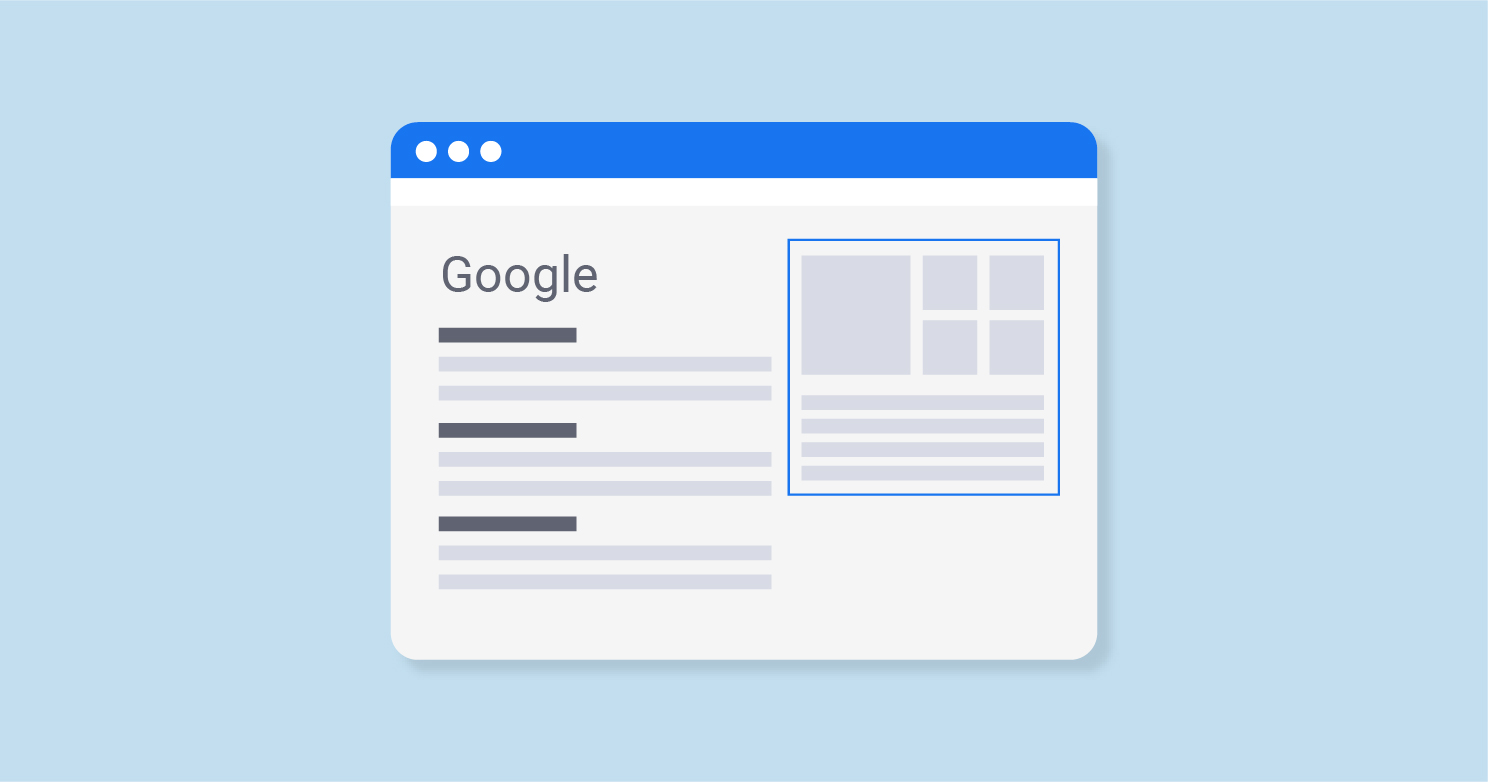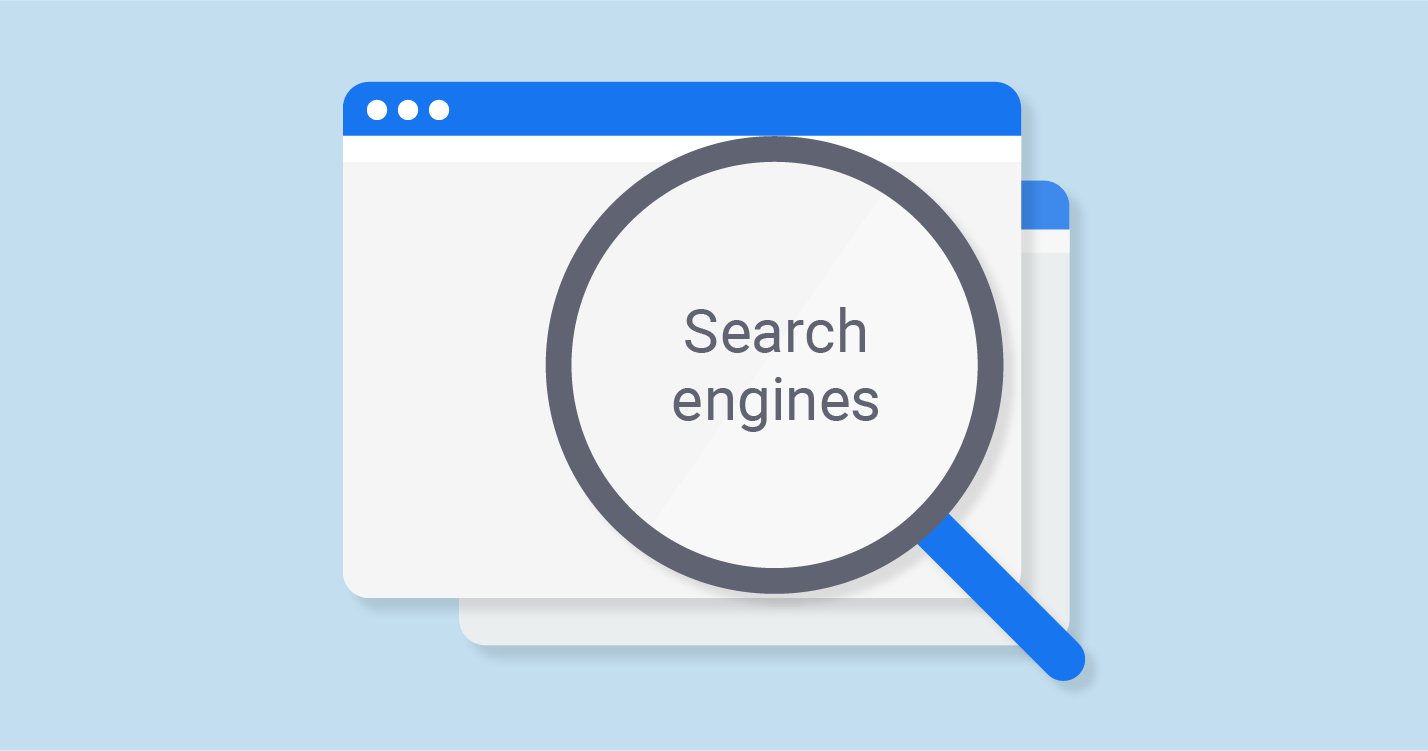What is Google’s RankBrain?
Google’s RankBrain is one of the most advanced and significant components of Google’s search algorithm. Introduced in 2015, RankBrain utilizes machine learning (ML) to interpret and understand search queries, and provide more relevant search results for users. Unlike traditional algorithms that were based on a fixed set of rules, RankBrain evolves and learns over time, making it a dynamic and adaptive system. Here’s a deeper dive into understanding this revolutionary algorithm.
The Machine Learning Aspect
At its core, RankBrain is a machine learning system. This means it uses artificial intelligence that can learn from data and improve its predictions over time without being explicitly programmed. When RankBrain encounters a search term it hasn’t seen before, it makes an educated guess about what the query might mean based on similar phrases it has processed in the past. This capability is especially important given that 15% of daily search queries on Google are new and have never been seen before.
How RankBrain Differs from Other Algorithms
Traditionally, search engines relied on a static set of rules and signals to rank web pages. These signals might include keyword density, backlink quality, and site structure. RankBrain, however, adds a layer of interpretation. It tries to discern the intent behind a search query, even if the query is ambiguous or hasn’t been encountered before.
For example, if someone types in a vague search term like “the green thing in the ocean,” traditional algorithms might struggle to provide relevant results. RankBrain, on the other hand, might interpret this as a query about “algae” or “sea plants” and return the most relevant search results and pages on these topics.
Importance in the Search Algorithm
While there are over 200 major ranking signals in Google’s algorithm, RankBrain quickly became one of the top three most important, according to Google itself. This underscores its pivotal role in deciphering user queries and delivering more precise search results.
The Evolution Over Time
Since its introduction, RankBrain has continuously evolved. Its machine learning capabilities mean that it’s always learning from new data. As users change the way they search and as new topics emerge on the internet, RankBrain adapts. This ongoing evolution ensures that Google can keep up with the dynamic nature of user behavior and the ever-expanding world wide web.
Hummingbird Update v/s RankBrain Algorithm Update
The landscape of Google’s search algorithm has witnessed numerous updates, two of the most prominent being the Hummingbird Update and the RankBrain Algorithm Update.
Hummingbird: Introduced in 2013, the Hummingbird update was a complete overhaul of the core algorithm. It focused on understanding the intent behind a user’s query rather than just the individual keywords. This meant that Google could now better handle conversational queries and provide results that matched the user’s intent, even if the exact phrasing wasn’t present in the content.
RankBrain: RankBrain, on the other hand, is a component of the broader Hummingbird algorithm. Introduced in 2015, it employs machine learning to interpret search queries, especially the 15% of daily queries that Google has never seen before. RankBrain’s primary function is to understand the context and semantics of queries, translating them into concepts and delivering relevant results.
While both are geared towards understanding the intent behind queries, Hummingbird focuses on the overall processing of search queries, whereas RankBrain specifically employs machine learning to decipher and learn from them.
Understanding the Google RankBrain Update
The Google RankBrain Update marked a significant advancement in the way Google processes search queries. Before RankBrain, Google’s algorithm was primarily based on a set of predetermined rules. RankBrain introduced machine learning, allowing the algorithm to learn from user behavior and adapt over time.
With RankBrain, Google could:
- Better handle never-before-seen queries.
- Understand the context behind queries rather than just focusing on keywords.
- Provide more relevant results by discerning user intent more accurately.
In essence, RankBrain added a layer of “intelligence” to the search algorithm, allowing it to evolve with the changing patterns of user behavior.
History & Evolution of the RankBrain
When RankBrain was first introduced in 2015, it was used for a small fraction of queries. However, its effectiveness quickly became apparent. Google soon revealed that RankBrain was one of the top three ranking signals in their algorithm.
Over time, as RankBrain continued to learn and process vast amounts of data, its influence grew. It adapted to the nuances of user behavior, the ever-changing nature of language, and the vast array of new topics emerging on the internet daily.
Today, RankBrain plays a pivotal role in almost every search query processed by Google, ensuring that users receive the most relevant and timely results.
Why did Google introduce RankBrain?
The digital landscape is ever-evolving, with users continuously adapting how they search and interact with content. Traditional algorithms, while effective, had limitations, especially when dealing with ambiguous queries or terms that hadn’t been seen before.
Google introduced RankBrain to address these challenges. The primary reasons were:
- Handling New Queries: Every day, Google encounters 15% of search queries it has never seen before. RankBrain’s machine learning capabilities allow it to make educated guesses about these new terms.
- Understanding Context: Instead of focusing purely on keywords, RankBrain understands the context and semantics of a query. This ensures that results match user intent more accurately.
- Adapting to User Behavior: The dynamic nature of user behavior meant that a static algorithm could become outdated. RankBrain’s learning capabilities ensure that the algorithm remains relevant and effective.
In essence, Google introduced RankBrain to make its search algorithm more adaptive, intuitive, and user-centric.
Google About RankBrain Algoritm
John Mueller, a Google Webmaster Trends Analyst, has spoken about RankBrain on Twitter on several occasions. In one tweet, he said that RankBrain is “one of the hundreds of signals that we use to rank websites.” He has also said that RankBrain is “not a separate algorithm, but rather a part of how Google works.”
Mueller has also advised SEOs not to try to optimize for RankBrain specifically. He has said that the best way to improve your website’s ranking is to focus on creating high-quality content that is relevant to your target audience.
Here are some specific examples of what John Mueller has said about RankBrain on Twitter:
- May 4, 2017: “If optimizing for Rankbrain = make a great site, it seems like the Rankbrain part is irrelevant. Make great sites for your users, folks.”
- May 12, 2017: “RankBrain is not a separate algorithm, but rather a part of how Google works. It helps us to better understand the searcher’s intent and to deliver the best results possible.”
- June 2, 2017: “RankBrain is one of the many signals that we use to rank websites. It’s not a magic bullet, but it does help us to improve the quality of our search results.”
- October 25, 2018: “RankBrain is not something that you can optimize for specifically. The best way to improve your website’s ranking is to focus on creating high-quality content that is relevant to your target audience.”
Overall, Mueller’s advice on RankBrain is clear: don’t try to optimize for it specifically, but instead focus on creating high-quality content for your users. If you do that, you’ll be well on your way to improving your website’s ranking in Google search results.
Visual Explanation of Google RankBrain
Understanding Google’s RankBrain can be challenging due to its technical nature. However, visual aids like infographics and diagrams can simplify complex concepts and make them more accessible to a broader audience. This section provides a visual exploration of RankBrain and its functionalities.
Infographics and Diagrams of RankBrain’s Functionality
Infographics: An infographic detailing RankBrain’s mechanism would display a flowchart-like structure. It would begin with a user’s search query, showcasing how RankBrain interprets this input. The flow would then branch out into different potential interpretations based on context. Each branch would highlight key components of the RankBrain system, such as contextual understanding, semantic search, and machine learning feedback loops.
Diagrams: Diagrams can visually represent the layers and components of RankBrain. One could illustrate:
- The input layer, where user queries are received.
- The processing layer, where RankBrain interprets the query using its machine learning model.
- The output layer, which displays search results based on RankBrain’s interpretation.
By displaying RankBrain’s structure and flow in this manner, users can grasp the algorithm’s intricacies without getting lost in technical jargon.
How RankBrain Measures User Satisfaction
User satisfaction is a key metric for Google, ensuring that users find what they’re looking for quickly and efficiently. RankBrain plays a pivotal role in this by interpreting and delivering search results that align with user intent.
Visual Representation: A bar graph could visually represent user satisfaction metrics. The X-axis could list various user actions, such as “Clicks on First Result,” “Time Spent on Page,” “Click-Through Rate,” and “Bounce Rate.” The Y-axis would represent the percentage or number of users. By analyzing the height of the bars, one can gauge which factors RankBrain deems crucial for user satisfaction.
Another visual tool could be a heatmap. By tracking where users click on a page or how far they scroll, heatmaps provide insights into user behavior and preferences. Brighter areas indicate higher activity, helping to discern which content or links are most appealing to users.
Through these visual tools, it becomes clear how RankBrain assesses user satisfaction, continuously refining its algorithm to better serve searchers.
Keyword Research in a RankBrain World
In the era of RankBrain, traditional keyword research methods have undergone significant transformations. With RankBrain’s emphasis on understanding user intent and context, SEO professionals have had to adapt their strategies. This section delves into the nuances of keyword research in a RankBrain-dominated world.
Ignore Long Tail Keywords (They’re Obsolete)
Long-tail keywords, traditionally cherished for their specificity and lower competition, have become less relevant in a RankBrain world. Here’s why:
- Understanding User Intent: RankBrain’s primary strength is understanding the intent behind a search query. This means that even if a user doesn’t use the exact long-tail keyword, Google can still interpret the intent and provide relevant results.
- Decreased Specificity: The rise of voice search and conversational queries means users are less likely to input long, specific phrases. They’re more likely to ask questions or use natural language.
- Focus on Topics, Not Just Keywords: With RankBrain, the emphasis has shifted from specific keyword matching to broader topic relevance. This means that content should be comprehensive and cover a topic holistically rather than just targeting specific long-tail keywords.
Optimize Around Medium Tail Keywords
Medium tail keywords strike a balance between the broadness of short-tail keywords and the specificity of long-tail keywords. In the context of RankBrain, here’s why they’re essential:
- Relevance & Specificity: Medium tail keywords are specific enough to indicate a user’s intent while being broad enough to encompass various related queries.
- Higher Search Volume: Compared to long-tail keywords, medium tail keywords generally have a higher search volume, leading to more potential traffic.
- Flexibility with Content Creation: When creating content around medium tail keywords, there’s room to address various aspects of a topic, making the content richer and more comprehensive.
Practical Examples of Keyword Research in a RankBrain Context
Let’s understand the shift in keyword research with a practical example:
Traditional Approach: For a business selling “handmade wooden toys,” the focus might be on long-tail keywords like “handmade wooden toy trains” or “handmade wooden dolls for toddlers.”
RankBrain Approach: Instead of the above, the emphasis might shift to medium tail keywords like “wooden toy collections” or “quality wooden toys.” Content would then be created around these keywords, addressing various sub-topics and ensuring comprehensive coverage. For instance, an article titled “The Ultimate Guide to Wooden Toy Collections” could cover types of wooden toys, benefits of wooden toys over plastic, and maintenance tips.
The aim is to create content that not only targets specific keywords but also addresses the broader intent and questions users might have related to those keywords. In a RankBrain world, it’s about understanding and fulfilling user intent in its entirety.
How Does Google RankBrain Work?
Google’s RankBrain represents a quantum leap in search engine technology, moving away from a solely rule-based algorithm to one that learns and evolves over time. At its essence, RankBrain employs machine learning to better interpreit search queries, aiming to understand the nuances of language and the intent behind each search. This ensures that users get the most relevant results, even for previously unseen or ambiguous queries.
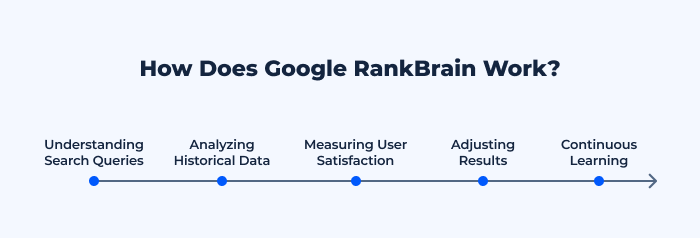
What Signals does RankBrain Consider?
RankBrain, like other parts of Google’s algorithm, considers a multitude of signals to determine the relevance and ranking of web pages for a given query. While the exact workings of RankBrain remain a closely guarded secret, some of the known signals include:
1. User Interaction Data: This encompasses metrics like:
- Click-Through Rate (CTR): The percentage of users who click on a search result after seeing it.
- Dwell Time: The amount of time a user spends on a site after clicking on its link from the search results.
- Bounce Rate: The percentage of users who return to the search results without interacting with the page.
2. Content Relevance: RankBrain assesses the relevance of the content on a page to the user’s query. This is not just about keyword matching but understanding the context and depth of the content.
3. Page Quality Signals: This includes factors like:
- Backlink Profile: The number and quality of other websites linking to a page.
- Domain Authority: The overall credibility and authority of the website’s domain.
- Content Freshness: How recently the content was updated and its relevance to current trends or events.
4. Technical Factors: These involve:
- Page Load Speed: How quickly the webpage loads.
- Mobile Friendliness: How well the page performs and displays on mobile devices.
- Secure and Accessible Website: Usage of HTTPS and the ease with which search engines can crawl the page.
5. Search History: RankBrain might also consider a user’s previous searches to better understand the context and intent of the current query.
6. Location and Personalization: The geographic location of the user and any personalization settings they might have can influence the results RankBrain provides.
7. Semantic Search: RankBrain looks at the relationships between words, considering synonyms and related terms to understand the broader topic of the query.
In conclusion, RankBrain considers a wide array of signals, weighing them differently based on the query’s context and intent. Its strength lies in its ability to adapt and learn from these signals continuously, ensuring that Google’s search results remain relevant and user-centric.
RankBrain & SEO
Search Engine Optimization (SEO) has always been about understanding and adapting to search engines’ algorithms to rank higher and attract more organic traffic. With the introduction of RankBrain, the SEO landscape saw a shift, emphasizing user intent and content relevance even more. RankBrain’s role in this ecosystem is pivotal, and understanding its importance can make a significant difference in an SEO strategy.
How Important is RankBrain Algorithm?
RankBrain’s significance in the realm of SEO cannot be understated for several reasons:
| Top Ranking Signal | Shortly after its introduction, Google itself declared RankBrain as one of the top three ranking signals in its search algorithm. This alone indicates the weightage and priority given to RankBrain when determining search rankings. |
| Understanding User Intent | Before RankBrain, search algorithms heavily relied on exact keyword matches. With RankBrain, the emphasis has shifted to understanding the intent behind a search query. This means that content that truly answers a user’s query, even if it doesn’t contain the exact keyword, can rank higher. |
| Adapting to Search Behavior | RankBrain’s machine learning capabilities allow it to adapt to changing user behaviors. As internet users evolve in how they search, RankBrain evolves in how it interprets those searches, ensuring that the search results remain relevant over time. |
| Handling Ambiguous Queries | One of RankBrain’s standout features is its ability to handle queries it has never seen before, which constitutes about 15% of all daily searches. In an ever-evolving digital world, this ability ensures that Google can provide accurate results for emerging trends, slang, or new terminologies. |
| Influence on Content Strategy | With RankBrain’s focus on user intent and semantic search, the SEO community has shifted its content creation strategies. Now, there’s a greater emphasis on creating comprehensive, high-quality content that addresses a topic holistically rather than just targeting specific keywords. |
Future of SEO: As machine learning and artificial intelligence continue to advance, algorithms like RankBrain will play an even more dominant role in search. SEO strategies will need to be more adaptive and user-centric, focusing on creating genuine value for the end-user.
Optimization for Click-Through Rate (CTR)
Click-Through Rate (CTR) is a pivotal metric in the digital marketing world, representing the ratio of users who click on a specific link to the number of total users who view a page or ad. In the context of SEO, improving CTR can not only drive more traffic but also potentially improve search rankings. One of the most effective ways to enhance CTR is by optimizing titles and description tags.
Optimizing Titles and Description Tags for CTR
Titles and description tags serve as the first impression of your content in search results. They provide a brief snapshot of what users can expect, making them crucial for attracting clicks. Here are some proven techniques to make these elements more click-worthy:
Pack Your Title Tags With Emotion
Using emotional triggers in titles can resonate with users, making them more inclined to click. For instance:
- Instead of “5 Tips for Better Sleep,” use “5 Proven Tips to Blissfully Drift into Dreamland.”
By tapping into the reader’s desire for restful sleep, the latter title elicits a stronger emotional response.
Add Brackets and Parentheses to the End Of Your Titles
Brackets and parentheses can add clarity or provide additional compelling details. They stand out visually in the search results, drawing the user’s attention. Examples include:
- “The Ultimate Guide to Digital Marketing [2023 Edition]”
- “10 Best Hiking Trails (With Stunning Views!)”
Such additions create curiosity and provide context, making users more likely to click.
Use Numbers in Your Titles
Numbers make titles specific and promise structured content, which many readers prefer. For instance:
“7 Ways to Improve Your Memory” sounds more enticing than “Ways to Improve Your Memory.”
Using odd numbers can also be more eye-catching, as studies suggest they appear less generic than even numbers.
Description Tag Optimization Techniques
The description tag, while not a direct ranking factor, plays a significant role in influencing CTR. Here’s how to optimize it:
- Make It Emotional: Similar to title tags, infuse emotion into your descriptions. “Discover the secrets to radiant skin that will leave you feeling confident and rejuvenated.”
- Highlight the Value: Clearly state what the user will gain. “Unlock proven strategies to boost your productivity in just 10 minutes a day.”
- Include a Call-to-Action (CTA): Encourage users to take action. “Learn more,” “Discover now,” or “Get started” can prompt users to click.
- Use Your Target Keyword: Ensure the primary keyword for the page is in the description. It gets bolded in search results when it matches the user’s query, making it stand out.
- Stay Within Length Limits: Keep your description between 50-160 characters to ensure it displays correctly and doesn’t get cut off in search results.
How to Optimize for RankBrain?
Optimizing for RankBrain means aligning with its core objective: understanding and meeting user intent. Unlike traditional SEO strategies that focus on specific keywords and backlinks, RankBrain optimization emphasizes content relevance, quality, and user engagement. Here are some approaches to align your content strategy with RankBrain:
- Focus on User Intent: Instead of just targeting keywords, understand the intent behind them. For instance, if someone searches for “how to tie a tie,” they’re likely looking for step-by-step instructions or a video tutorial. Ensure your content addresses this need.
- Quality Over Quantity: RankBrain prioritizes content quality. This means well-researched, authoritative content that provides genuine value will rank higher.
- Optimize for Semantic Search: RankBrain is excellent at understanding context. So, use related terms, synonyms, and topics in your content to provide comprehensive coverage.
- Improve User Experience: Ensure your website is mobile-friendly, loads quickly, and is easy to navigate. A good user experience can lead to longer dwell times, signaling to RankBrain that your content is valuable.
Optimizing Content for Bounce Rate and Dwell Time
Bounce rate and dwell time are crucial metrics that RankBrain considers when determining the relevance and quality of content. A low bounce rate and higher dwell time typically indicate that users find your content valuable and relevant to their search.
Push Your Content Above the Fold
The content “above the fold” refers to what users see on their screens without scrolling. This section is critical as it’s the first thing users engage with.
- Engaging Headlines: Craft headlines that grab attention and make users want to read more.
- Relevant Images or Videos: A relevant visual can convey the essence of your content quickly and effectively.
- Start with Key Information: Present the most critical information upfront, so users immediately know they’re in the right place.
Use Short Intros (5-10 Sentences MAX)
A concise introduction sets the stage for what’s to come, enticing readers to continue.
- State the Purpose: Clearly mention what the content will cover.
- Create Curiosity: Pose a question or present a compelling fact to pique interest.
Publish Long, In-Depth Content
Long-form content often correlates with higher rankings as it provides comprehensive information on a topic.
- Cover Subtopics: Delve into related subtopics to give readers a full understanding.
- Include Relevant Data: Support your content with statistics, studies, and credible sources.
- Update Regularly: Ensure your long-form content stays current by updating it with the latest information.
Break Up Your Content Into Bite Size Chunks
Large blocks of text can be intimidating and hard to read.
- Use Subheadings: They provide structure and make it easy for readers to scan your content.
- Bullet Points and Lists: These break up the text and present information in an easily digestible format.
- Short Paragraphs: Aim for 2-3 sentences per paragraph to improve readability.
Optimizing for RankBrain and improving metrics like bounce rate and dwell time requires a user-centric approach. By delivering valuable, relevant content in a user-friendly format, you can align with RankBrain’s objectives and enhance your SEO performance.
Additional RankBrain Optimization Strategies and Case Studies
While the core principles of RankBrain revolve around user intent and content relevance, there are other strategic methods that can be employed to further optimize for this algorithm. Here, we’ll delve into additional tactics, underpinned by real-world examples, to enhance your RankBrain optimization efforts.
Increase Brand Awareness to Improve CTR
A recognizable and trusted brand often enjoys higher click-through rates. When users recognize a brand in search results, they’re more likely to click on it due to familiarity and trust.
Case Study: A popular online clothing retailer noticed that despite ranking well, their CTR was lower than competitors. By investing in brand awareness campaigns, they increased their brand searches by 40%, leading to a 25% uplift in organic CTR within six months.
Try Different Marketing Strategies
Diversifying marketing efforts can help in reaching different segments of your target audience, increasing overall brand visibility.
- Social Media Campaigns: Use platforms like Instagram, Facebook, or LinkedIn to run targeted ads or organic campaigns.
- Collaborations and Partnerships: Collaborate with influencers or brands in related industries to tap into their audience.
- Engage in Community Forums: Participate in industry-specific forums or platforms like Reddit and Quora to showcase expertise and gain recognition.
Case Study: A tech startup, initially focused solely on SEO, diversified by engaging in tech forums and collaborating with tech influencers on YouTube. This not only boosted their brand awareness but also drove a 30% increase in organic traffic.
Create Value-Driven Email Newsletters
Regularly engaging with your audience through informative and value-packed email newsletters can keep your brand top-of-mind.
- Educational Content: Share industry insights, tutorials, or recent developments.
- Exclusive Offers: Provide newsletter subscribers with exclusive deals or early access to new products.
- Engaging Formats: Use visuals, infographics, and interactive content to keep readers engaged.
Case Study: An online educational platform started a monthly newsletter sharing free resources, industry news, and exclusive webinar invites. Over a year, their website saw a consistent rise in direct traffic, with users spending 20% more time on their platform.
Using LSI Keywords to Fill in “Content Gaps”
Latent Semantic Indexing (LSI) keywords are terms and phrases related to your main keyword. Incorporating them ensures a comprehensive content coverage, signaling to RankBrain that the content is in-depth and relevant.
- Use Tools: Tools like LSIGraph or SEMrush can help identify LSI keywords related to your main topic.
- Natural Integration: Seamlessly integrate these keywords into your content, ensuring it still reads naturally.
- Update Older Content: Revisit and update older articles or posts with relevant LSI keywords to keep them current.
Case Study: A health and wellness blog updated their older articles by integrating LSI keywords related to the main topics. Within three months, they noticed a 15% increase in organic traffic and improved rankings for broader search queries.
Improve Ranking with Google RankBrain
Google’s RankBrain has revolutionized the landscape of search engine optimization. As a machine learning-driven component of Google’s core algorithm, RankBrain focuses on deciphering user intent behind queries. Therefore, to improve rankings in this RankBrain era, one must prioritize the user’s experience, intent, and satisfaction. Here’s a strategic guide on how to align your content and SEO efforts with RankBrain’s functionalities:
Understand User Intent
Before creating content, it’s crucial to understand what users are genuinely looking for when they input specific queries.
- Analyze Query Formats: Are users asking questions? Are they looking for lists, guides, or specific products? Tailor your content format accordingly.
- Dive Deeper with Tools: Use tools like AnswerThePublic or SEMrush to understand the range of queries related to a particular topic.
Prioritize Content Quality and Depth
RankBrain values in-depth and high-quality content that offers comprehensive information on a given topic.
- Holistic Content: Don’t just answer the primary query; anticipate follow-up questions and address them.
- Support with Data: Back up your claims with data, studies, and authoritative sources to enhance credibility.
- Regularly Update: Ensure your content remains current and relevant by revisiting and updating it periodically.
Optimize for Engagement Metrics
RankBrain observes how users interact with search results, using metrics like dwell time, bounce rate, and CTR as ranking signals.
- Attention-Grabbing Titles: Craft titles that resonate with users and compel them to click.
- Interactive Elements: Use videos, infographics, and interactive tools to keep users engaged and increase dwell time.
- Mobile Optimization: Ensure your site is mobile-friendly, as a significant portion of users search via mobile devices.
Leverage Semantic SEO
RankBrain is adept at understanding context and relationships between words. Thus, it’s essential to move beyond exact-match keywords.
- Use LSI Keywords: Integrate terms and phrases related to your main keyword to provide context.
- Answer Related Questions: Tools like “People also ask” on Google can give insights into related queries. Address these in your content.
Foster Trust and Credibility
If users trust your content and find it credible, they’re more likely to engage with it, sending positive signals to RankBrain.
- Secure Your Site: Use HTTPS to ensure data security, which can also be a positive ranking factor.
- Showcase Reviews and Testimonials: Display user reviews, testimonials, and industry certifications to enhance credibility.
- Maintain a Clean Backlink Profile: Regularly audit your backlinks, ensuring they come from reputable sources.
Encourage User Feedback
User feedback can offer insights into areas of improvement.
- Surveys and Feedback Forms: Understand what users like or dislike about your content.
Comments Section: Allow users to comment on your articles, fostering engagement and community.
Google SERP Checker to Monitor Your Website’s Ranking on Google SERP
The Google SERP Checker tool is essential for digital marketers, SEO professionals, and website owners to track their website’s ranking in Google’s search engine results pages (SERPs). It offers a fast and precise method to check your site’s position for specific keywords, enabling you to assess your SEO strategy’s effectiveness. Simply input your keywords and domain to instantly understand your site’s visibility in Google searches, a key factor in boosting organic traffic.
This tool provides more than just ranking checks; it offers insights into search trends and keyword performance. Users can track ranking changes over time for a thorough analysis of SEO efforts and market trends. Its user-friendly interface enables easy monitoring of competitors’ rankings and comparison of your site’s performance with industry standards, identifying areas for improvement. Thus, the Google SERP Checker is not only a ranking tool but also a strategic guide for enhancing your website’s search engine presence.
Track Your Google Position!
Maximize your SEO results with our comprehensive Google SERP Checker.
Conclusion
In the ever-evolving landscape of search engine optimization, Google’s RankBrain has emerged as a pivotal component, reshaping how we approach content creation and SEO strategies. At its core, RankBrain emphasizes understanding and catering to user intent. Thus, to thrive in this new era, it’s imperative for businesses and content creators to prioritize the user experience. By crafting high-quality, in-depth content that genuinely addresses user queries and anticipates their needs, one can not only improve rankings but also establish trust and credibility with their audience. As we navigate the complexities of the digital world, aligning with RankBrain’s objectives offers a clear path to sustained SEO success.
